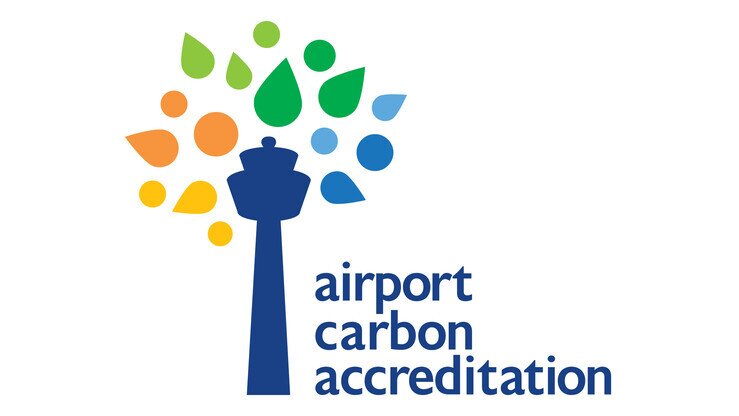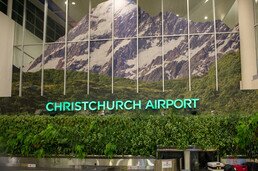Christchurch International Airport Details Programme to Align with Global Climate Goals
- 09 Feb 2021
The newly-released Airport Carbon Accreditation Interim Report 2019-20201 showcases the latest results of and developments in the global carbon standard for airports. In it, ACI Asia-Pacific member Christchurch International Airport from New Zealand explains its reasoning for applying for Level 4 - Transformation and in the process becoming the first in the world to be accredited under the new level.

Living wall at Christchurch International Airport
Why did your airport decide to apply for Level 4/4+?
We started our carbon journey back in 2007, when our first carbon footprint was independently audited. Then our Board passed our Carbon Policy and we launched our Green Transition Plan to investigate emission reduction projects we could undertake.
We wanted to do more, so developed an emissions reduction pathway, in line with the UNFCCC Paris Agreement to keep global temperatures within 1.5 degrees, and wanted expert scrutiny to check our proposals.
That’s when we heard about the Airport Carbon Accreditation Level 4 Transformation – an airport specific programme that aligns with the global climate goals. It required setting longterm pathways and providing evidence based examples of how airports, and their stakeholders, will achieve their emission targets.
This aligned with the work we were doing and was overseen with international airport specific expertise, so exactly what we were looking for to ensure our climate action truly was best practice.
What was the most challenging requirement in the accreditation process?
The accreditation process is extensive, detailed and requires a significant commitment from an airport. We were driven to learn and adapt as we went through the accreditation process with the support of the Airport Carbon Accreditation Administrator, and the expert examination of an independent verifier. What airports can get at the end of it is an extremely robust plan aligned with global targets, which holds up to scrutiny and can guide emissions reductions through the next 30 years.
What would you recommend to other airports that wish to become accredited at Level 4/4+?
This is an enormously valuable process to go through as an airport, and we strongly recommend other airports pursue Level 4/4+ accreditation. As part of the aviation sector that contributes three percent of global emissions, we have a responsibility to do all we can to reduce our operational footprints - and technology currently exists for us to do so.
The process of setting carbon reduction targets, a carbon management plan, and a stakeholder management plan, are all crucial elements for an airports future planning – and necessary to understand for the transition to a low carbon future. Ultimately, we want aviation decoupled from greenhouse gasemissions, and this is an important step in that direction.
New level 4 and 4+
Two new accreditation levels were introduced in 2020: Level 4 (Transformation) and Level 4+ (Transition), for two main reasons. Firstly, to align the programme with the objectives of the Paris Agreement to limit the increase of global average temperature to 2°C above pre-industrial levels and pursuing efforts not to exceed 1.5°C; and secondly, to respond to evolving airport needs, especially for those airports that have already reached a high level of carbon management maturity and wish to show continuous improvement.
Levels 4 and 4+ are considered as an interim step towards the long-term goal of supporting airports in achieving net zero carbon emissions. These two new levels will therefore encourage airports to reduce their emissions in line with the latest scientific and political developments and meet growing public and stakeholder expectations.










